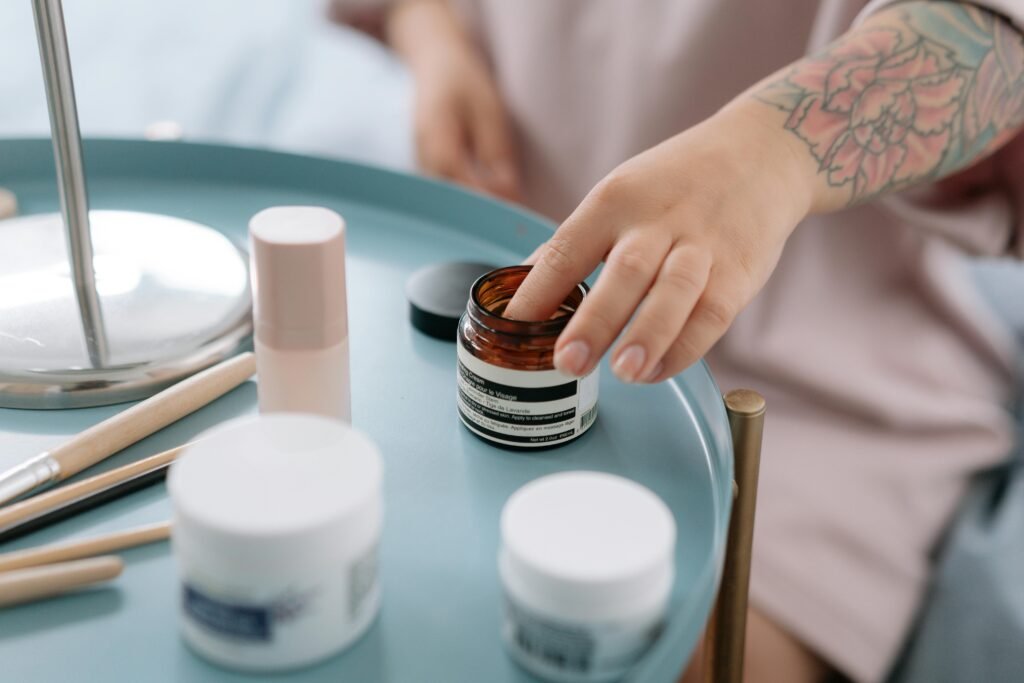Tattoos are beautiful, expressive, and often deeply personal—but let’s be honest, they can hurt. Whether you’re getting your first ink or you’re a seasoned tattoo collector, managing pain during the session is always a consideration. That’s where numbing creams for tattoos come in.
Tattoo numbing creams are topical anesthetics applied to the skin to reduce pain sensations during the tattooing process. These creams can make the experience more comfortable, especially for longer sessions or sensitive areas like ribs, spine, or inner arms.
Do Tattoo Numbing Creams Really Work?
Yes—when used correctly, numbing creams can significantly reduce or even eliminate pain during tattooing. They work by blocking the nerve signals in the area where they’re applied, creating a local anesthetic effect. While results vary by product, skin type, and application technique, the best numbing creams offer 1–4 hours of relief.
However, not all numbing creams are created equal. Some may only dull the pain slightly, while others can fully numb the area. That’s why choosing a high-quality, clinically-backed cream is essential.
Types of Numbing Agents in Creams
Numbing creams usually include one or more active ingredients:
-
Lidocaine (2–5%) – Most common; fast-acting and safe.
-
Benzocaine – Used less frequently; ideal for surface-level numbing.
-
Tetracaine – Powerful but more likely to cause skin reactions.
-
Epinephrine – A vasoconstrictor that reduces bleeding and swelling.
Lidocaine is the gold standard for tattoo numbing creams due to its quick onset, minimal side effects, and non-interference with ink or healing.
Top 10 Best Numbing Creams for Tattoos (2025 Picks)
Here are the best tattoo numbing creams based on effectiveness, safety, and customer feedback:
| Cream | Key Features | Price Range |
|---|---|---|
| Numb Master 5% Lidocaine | Max strength, fast-acting, FDA-approved | $$ |
| Dr. Numb | Long-lasting (up to 3–4 hrs), water-based | $$$ |
| Zensa Numbing Cream | Natural botanicals, dermatologist-recommended | $$$ |
| Ebanel Numb 520 | 5% Lidocaine, soothing aloe & vitamin E | $$ |
| Hush Anesthetic Gel | Epinephrine-based, artist-approved | $$$ |
| Base Labs Numbing Cream | Ideal for sensitive skin, no greasy residue | $$ |
| INK-EEZE Numb Formula | Tattoo-specific formula, clean ingredients | $$$ |
| Greencaine Blast | Popular for cosmetic tattoos and microblading | $$$ |
| LMX 4 Topical Cream | Medical-grade, used by doctors | $$$ |
| Tattoo Numb 520 Cream | Affordable and fast-acting | $ |
Always check for FDA approval, especially when purchasing from marketplaces.
Factors to Consider When Choosing the Best Numbing Cream for Tattoos
Before you grab the first cream you see online, consider:
-
Lidocaine Strength: 5% is the max for OTC use.
-
Duration: How long does it last after application?
-
Onset Time: Some take 20 mins, others 1 hour.
-
Consistency: Cream, gel, or spray—choose what’s comfortable.
-
Skin Type Compatibility: Some are better for sensitive skin.
-
Artist Recommendation: Many tattoo artists have their preferences.
-
Price & Availability: Value matters—but don’t compromise safety.
How to Use Tattoo Numbing Cream Safely
A successful application depends on how you apply it. Follow these steps:
-
Wash and dry the area thoroughly.
-
Apply a thick layer (don’t rub in).
-
Cover with plastic wrap for at least 30–60 minutes.
-
Remove wrap and excess cream just before tattooing.
-
Never reapply during a session unless approved by your artist.
Caution: Do not apply to broken skin unless the product is specifically made for it.
When Should You Apply Numbing Cream?
Apply your cream 30 to 60 minutes before your tattoo appointment. Timing is key—too early, and the numbing may wear off; too late, and it may not fully activate.
How Long Do Numbing Creams Last?
Most high-quality creams offer relief for 1 to 4 hours, depending on:
-
Skin thickness
-
Product strength
-
Area of the body
For long sessions, consult your artist on mid-session reapplication strategies or combining with numbing sprays.
Can You Use Numbing Cream on Large Tattoos?
Yes, but:
-
Apply in sections rather than all at once.
-
Monitor for side effects like tingling, rash, or dizziness.
-
Don’t exceed the recommended dose.
Larger areas may also benefit from sprays or gels for quicker absorption.
Numbing Creams vs Numbing Sprays
| Feature | Cream | Spray |
|---|---|---|
| Absorption | Slower, more lasting | Faster, wears off quicker |
| Use Case | Before tattooing | During or between breaks |
| Application | Thick layer with wrap | Quick spritz, no cover |
| Duration | 2–4 hours | 30–60 mins |
Sprays like Hustle Bubbles or Hush Spray are often used mid-session to extend relief.
Are Tattoo Numbing Creams Safe?
Yes, if used responsibly. Side effects are rare but can include:
-
Temporary redness or swelling
-
Allergic reactions
-
Nausea or dizziness (from systemic absorption)
Always patch test 24 hours in advance and inform your artist.
What Tattoo Artists Think About Numbing Creams
While some artists discourage use—believing it may alter skin texture—most are open to using approved creams when:
-
The client is nervous or anxious.
-
The session is long or covers sensitive areas.
-
The product doesn’t affect ink absorption.
Many professionals now stock brands like Hush, Zensa, or Dr. Numb in their studios.
Common Misconceptions About Numbing Creams
-
“They make you bleed more” – Only if used incorrectly.
-
“They ruin the ink” – Not true with quality products.
-
“You won’t feel anything” – They reduce pain, not eliminate it entirely.
-
“All creams are the same” – Varying ingredients and strengths matter.
Best Numbing Cream for Blackout Tattoos
Blackout tattoos require deep penetration. Try:
-
Ebanel 5% Lidocaine or
-
INK-EEZE Numb for long-lasting relief and deep numbing.
Best Numbing Cream for Permanent Makeup and Cosmetic Tattoos
Facial tattoos demand gentle yet effective products. Top picks:
-
Zensa Numbing Cream (suitable for lips, brows, and eyeliner)
-
Greencaine Blast (used by cosmetic tattoo professionals)
Using Numbing Cream for Cover-Up Tattoos
Cover-ups often involve:
-
Dark inks
-
Long sessions
-
Multiple passes
Using a reliable numbing cream beforehand ensures better tolerance and less movement during work.
Do Numbing Creams Affect Tattoo Ink or Healing?
Not if the cream is:
-
Removed properly before starting
-
Water-based and free from heavy oils or waxes
Avoid greasy creams that clog pores or affect stencil adhesion.
What to Do If Numbing Cream Wears Off Mid-Tattoo
Stay calm and consider:
-
Applying a numbing spray if the artist allows it
-
Taking a short break
-
Switching positions to reduce pain perception
Always discuss mid-session options with your tattooist.
Tattoo Aftercare and the Role of Numbing Creams
Numbing creams are pre-tattoo solutions, not aftercare products. For healing:
-
Avoid petroleum-heavy products immediately.
-
Use light, breathable moisturizers like Aquaphor or Tattoo Goo.
Can You Be Allergic to Numbing Creams?
Yes. Signs include:
-
Redness
-
Burning or itching
-
Blisters
Do a patch test at least a day in advance, especially if you have sensitive skin or a history of allergies.
Homemade Numbing Solutions vs Commercial Creams
Homemade methods using ice, clove oil, or essential oils are:
-
Less effective
-
Riskier
-
Not medically approved
Stick with FDA-regulated over-the-counter creams for predictable results.
Are Prescription Numbing Creams Better?
Sometimes, yes. Stronger options like:
-
EMLA Cream (lidocaine/prilocaine)
-
BLT Cream (benzocaine/lidocaine/tetracaine)
These require a prescription, usually used in clinical or cosmetic surgery settings. Ask your doctor if appropriate.
Numbing Creams for Scalp, Rib, and Spine Tattoos
These are high-pain areas. Top picks include:
-
Dr. Numb (long-lasting)
-
Hush Gel (especially on the scalp)
For these zones, numbing creams can make the difference between powering through and tapping out early.
Tips for First-Time Tattoo Clients Using Numbing Cream
-
Always consult your artist in advance.
-
Use only trusted products.
-
Follow application instructions precisely.
-
Hydrate before your session.
-
Don’t expect 100% pain elimination—just manageable discomfort.
Numbing Cream Storage and Shelf Life
Store creams:
-
At room temperature
-
Away from direct sunlight
-
Sealed and dry
Most creams last 2–3 years unopened. Check the expiry date before use.
Legal and FDA Regulations on Numbing Creams
The FDA limits lidocaine concentration to 5% for over-the-counter creams. Some countries regulate these products differently, and high-concentration imports may not be legal or safe.
Always purchase from trusted pharmacies or licensed sellers.
Where to Buy the Best Numbing Cream for Tattoos
-
Amazon – Wide selection and user reviews
-
Walmart / Walgreens / CVS – Reliable pharmacy brands
-
Tattoo Studios – Often sell artist-approved products
-
Brand websites – Best for genuine and bulk orders
Budget-Friendly Numbing Creams That Work
If you’re on a budget, try:
-
Ebanel Numb 520
-
Base Labs Lidocaine Cream
-
Tattoo Numb 520
These provide solid results without the premium price tag.
Also read: Aquasoil: The Complete Guide to Nutrient-Rich Substrates
FAQs
Does numbing cream ruin tattoos?
Not if removed properly before inking begins.
How long does tattoo numbing cream last?
1 to 4 hours depending on product strength and skin type.
Can I use numbing cream for microblading?
Yes, but only creams approved for facial skin use.
Do tattoo artists mind if I use numbing cream?
Many accept it if you inform them beforehand and use trusted brands.
Can I reapply numbing cream mid-session?
Not usually. Use numbing sprays instead with your artist’s approval.
Is lidocaine safe for everyone?
Generally yes, but avoid if you’re allergic or have certain heart conditions.
Conclusion
Choosing the best numbing cream for tattoos can transform your inking experience from anxiety-filled to manageable—even enjoyable. With options ranging from medical-grade lidocaine creams to herbal-based alternatives, there’s something for everyone, whether you’re getting your first tattoo or a full back piece.
Always prioritize safety, follow application directions closely, and consult with your tattoo artist. With the right prep, your next tattoo can be more art and less agony.


